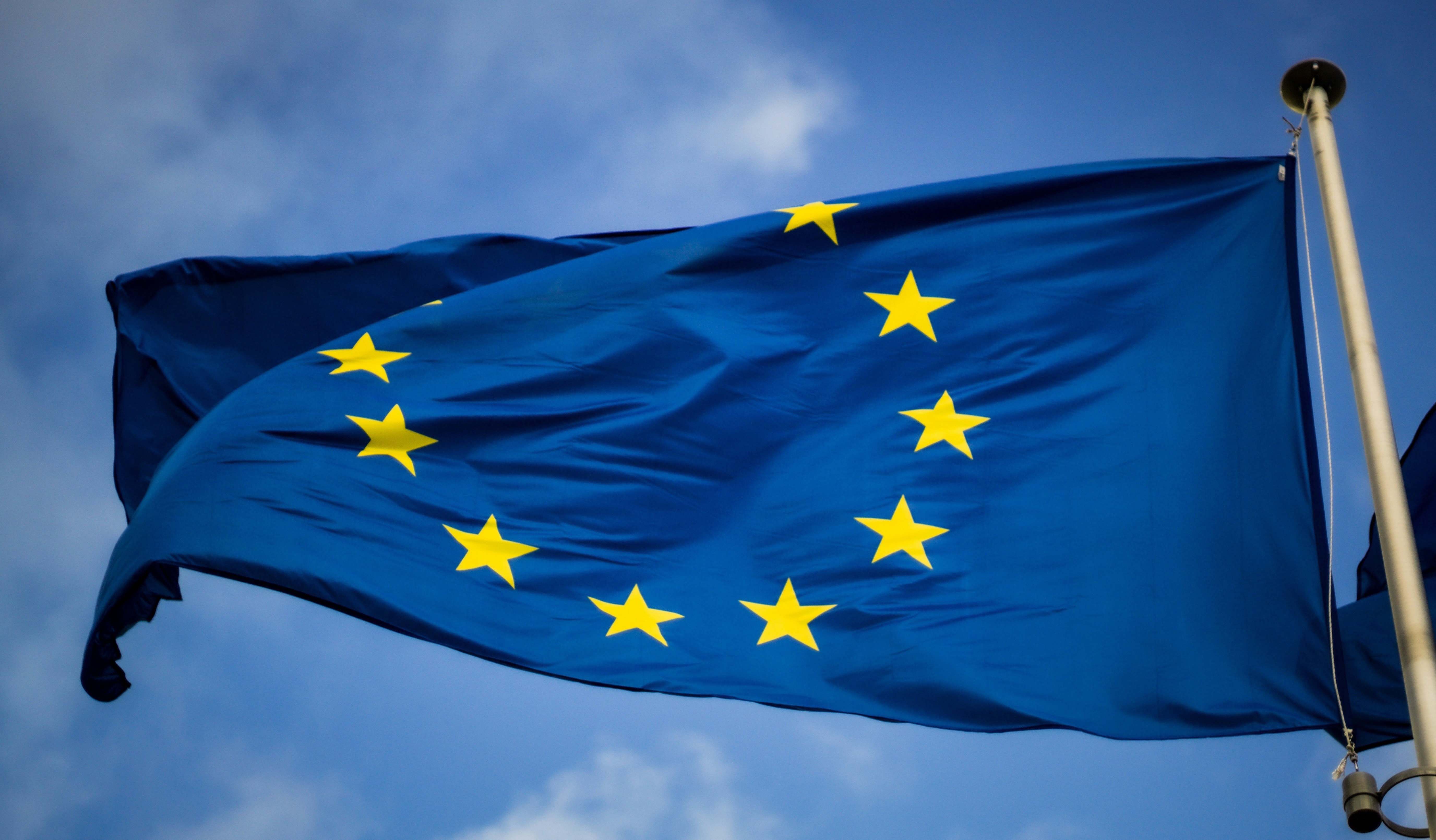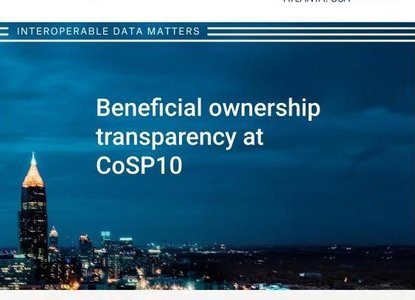European Union takes important steps towards standardised and interoperable beneficial ownership information

Photo by Christian Lue on Unsplash
The European Parliament has adopted a new anti-money laundering (AML) package including new provisions for high-quality beneficial ownership (BO) data for legal entities and legal arrangements. The AML package comprises the sixth Anti-Money Laundering Directive (AMLD6), a new AML regulation, and the creation of a new European Union (EU) AML authority.
The following is an initial look at the final compromise texts of the directive and the regulation published in February 2024, highlighting some interesting developments and what Open Ownership will be watching out for next. The laws still need to be formally adopted by the European Council, before publication in the EU’s Official Journal.
Access provisions
A 2022 ruling by the Court of Justice of the European Union led to the suspension of public access to BO registers for legal entities in many member states, and has significantly influenced the discussions, proposals, and negotiations about access rules in the new AML package, which now includes provisions for access to this information based on demonstrating legitimate interest.
Due to legitimate interest access to BO information not leading to effective access in the past, many voiced scepticism regarding the potential of the new AML package to lead to effective data use across EU member states (for Open Ownership’s views on access and usability, please see this blog post). For example, under AMLD4 BO information for legal entities was provided on the basis of legitimate interest, as was BO information for legal arrangements under AMLD5. A number of countries have poor track records in granting access requests in these systems of access.
However, as the proposals have shaped up, many of those advocating for reforms have voiced cautious optimism. One major reason for optimism is that – in addition to “immediate, unfiltered, direct and free access” for a range of EU and national authorities, and “timely” access for obliged entities (Article 11) – some parties are deemed to have a legitimate interest by default. These parties include third-country competent authorities and obliged entities as well as non-governmental organisations, academics, and investigative journalists working on AML issues, amongst others. In addition, there should be no discrimination based on where these parties are located, and access in one member state should give access to all (so-called mutual recognition).
The directive also has provisions for member states to grant access based on legitimate interest on a case-by-case basis for “other persons who are able to demonstrate a legitimate interest with respect to the purpose of preventing and combating money laundering, its predicate offences and terrorist financing”, and categories may be revised based on this. Unsurprisingly, this means the access procedures need to be standardised, and the directive gives the European Commission powers to do so.
Access procedures will be standardised across member states. Article 12b of the directive states that the Commission “shall adopt by means of implementing acts, technical specifications and procedures necessary for the implementation of access on the basis of a legitimate interest by the [BO] registers [...] including [...] standardised templates for requesting access to the register and for requesting access to information on legal entities and legal arrangements”. There is significant potential for the Commission to create a quick and easy procedure that enables effective access.
Once access is established, what do these users have access to? This is still not entirely clear. It seems some users, including competent authorities, obliged entities, civil society organisations, academics, and journalists with legitimate interest, will have access to the full dataset rather than specific entries. Article 12 of the directive states that those with legitimate interest should be able to access both historical data and “a description of the control or ownership structure”, which are both covered in the Open Ownership Principles.
The regulation now also prescribes the “minimum set of personal data of the beneficial owner, the nature and extent of the beneficial interest held in the legal entity or legal arrangement and information on the legal entity or legal arrangement” in Article 44. This states that, “where the ownership and control structure contains more than one legal entity or legal arrangement, a description of such structure, including names and, where it exists, identification numbers of the individual legal entities or legal arrangements that are part of that structure, and a description of the relationships between them, including the share of the interest held”. This suggests that information about the wider BO networks may be available as structured data, but the directive is unfortunately not more stringent about requiring the collection of reliable identifiers. In addition, whilst Article 10 states that BO information “shall be available in machine-readable format”, there are no specific requirements for access to the data via an application programming interface (API) or in bulk. These are critical to ensure many of these user groups can use the data effectively, especially where registers only have limited search functionality.
It also remains unclear what is meant by “interconnected”. For example, if a BO network comprises corporate vehicles in multiple member states, the requirement to collect information on the “control or ownership structure” may see multiple member states collecting information about the same corporate vehicles. Will this information be integrated into a single view, or will users be left to piece together the information themselves? Will access be provided in a way that will allow users to integrate the information at scale?
The most promising aspect of the directive is that data formats will also be standardised. “[T]he format for the submission of beneficial ownership information to the relevant national registers should be uniform and offer guarantees of transparency and legal certainty”, the directive states. Article 10, Paragraph 4 elaborates: “By ... [one year after the date of entry into force of this directive] the Commission shall adopt, by means of implementing acts, the format for the submission of beneficial ownership information”. This is a critical step towards EU-wide interoperable BO data. The directive frequently mentions “interconnected registers” with respect to access, which appears to refer to the “European Central Platform established by Article 22(1) of Directive (EU) 2017/1132”, or BORIS, which may be the mechanism by which access will be facilitated, although access to information “in each Member State’s register should be granted based on the definition of legitimate interest, by virtue of a decision taken by the relevant entity of that Member State”. Whilst BORIS was a portal to search multiple EU registers at the same time, it was never a truly interconnected register. If used to centralise access to standardised data from multiple EU registers, it may be on the way to becoming one.
Additionally, all these access rules will cover both legal entities and legal arrangements. Open Ownership advocates for parity between the treatment of legal entities and arrangements. Almost everywhere in the world, requirements on registration, disclosure, and access of information for legal arrangements is trailing behind that of legal entities, creating a huge potential for the displacement of risk. Whilst many saw the change from public access to legitimate interest as a setback for beneficial ownership transparency (BOT) in the EU for legal entities, for access to information about legal arrangements this is a considerable step forward.
Beneficial Ownership Data Standard
The majority of the data requirements above are included or currently in development in Open Ownership’s Beneficial Ownership Data Standard (BODS). BODS is an open standard providing guidance for collecting, sharing, and using high-quality data on beneficial ownership. BODS lets users capture data on both legal entities and legal arrangements, for all types of BO interests – held both directly and indirectly – and has been developed with a focus on internationalisation to support widespread adoption. BODS therefore allows users to represent full BO networks. Important new features to be launched in v0.4 in June include allowing users to better capture change over time, critical to capturing high-quality historical data. Visit standard.openownership.org to read the full BODS documentation in English, Spanish, and Russian, or check out our range of open source tools related to BODS.
Other provisions
There are a number of other developments in the AML package that are worth mentioning. Whilst the EU will continue to use a 25% ownership or control threshold to establish beneficial ownership, Article 42a of the regulation gives powers to the Commission to prescribe a lower threshold (likely 15%) to high-risk sectors: “In order to ensure that the Union is able to adequately mitigate such varying levels of risk, it is necessary to empower the Commission to identify those categories of legal entities that should be subject to lower beneficial transparency thresholds”.
The EU is also making exemptions for listed companies more stringent. Article 46a of the regulation states that “companies whose securities are admitted to trading on a regulated market” will be exempt “provided that: (i) control over the company is exercised exclusively by the natural person with the voting rights; and (ii) no other legal persons or legal arrangements are part of the company’s ownership or control structure”. It seems that the EU is moving towards exemptions based on ownership and control structures. It will be interesting to see how this will be implemented and enforced, and it will require high-quality information about the ownership and control of listed companies, as explored in a recent Open Ownership briefing.
Moreover, the regulation is taking additional steps to harmonise the application of BO disclosure requirements across all investment funds under Article 43c. Importantly, the new regulation acknowledges that investment funds might be constituted as legal entities with legal personality, legal arrangements without legal personality, or in other forms (Article 68b). The variations in legal forms of investment funds is one of the characteristics that can make including them in BO disclosure regimes challenging, as explored in a recent Open Ownership briefing. The regulation asserts that the approach to the identification of the beneficial owner should be consistent with their purpose and function, regardless of their legal form.
Next steps towards usability
With this new package, the EU is taking a commendable step towards standardising access regimes and data formats. As a pioneer in BOT and data protection, the EU will likely continue to set standards for the implementation of BOT which will have a global influence. The Commission has a real opportunity to accelerate and scale up global progress towards interconnected BO data.
Open Ownership will work with partners such as the Europe Chapter of the Global Coalition for Fighting Financial Crime to ensure the lessons of developing BODS and supporting implementation in over 40 countries can inform the standardisation efforts by the Commission, and that usability is put front and centre.
Related articles and publications
Publication type
News article
Sections
Implementation
Open Ownership Principles
Coverage,
Central register,
Access,
Structured data


